10 Books Every Dyslexia Educator Should Own
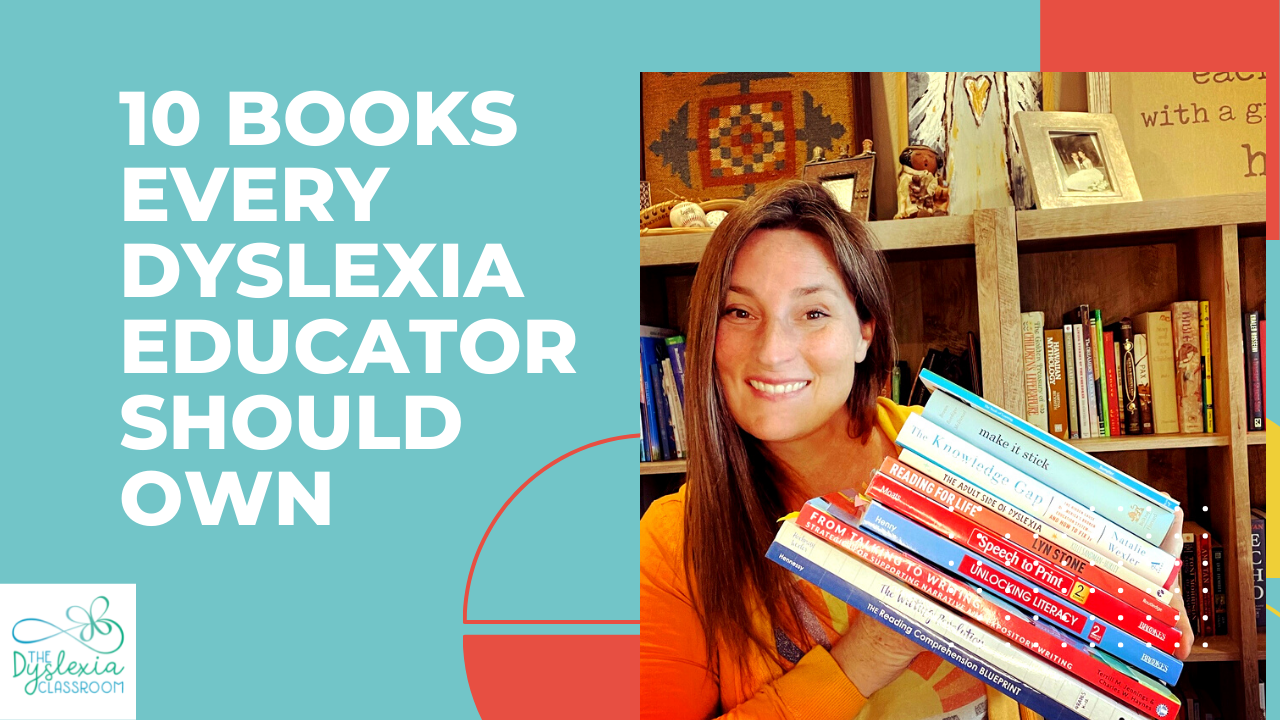
If you are anything like me, you ran out of space on your bookshelf a long time ago but can't stop buying books! Seriously though, as educators, I believe that we are lifelong learners, and therefore, I tend to seek out books that further my knowledge and help me improve my craft of teaching.
If you follow me on Instagram, you will often see me sharing books for educators and students. In October, I shared my list of books every dyslexia educator should own. Read it HERE.
Now, I'm sharing ten more books about literacy, writing, learning, and dyslexia that I think are worth the reading.
Working memory is a topic that often comes up in meetings with parents and schools surrounding dyslexia. Some children have a learning profile that indicates a need for further assistance with working memory. You can catch an entire episode on working memory on the Together in Literacy podcast. Find the episode HERE.
The first two books I recommend are an excellent way to dive into this topic.
...Is there a link between reversals and dyslexia?
While we want to be alert for the early indicators of dyslexia, there continues to be some misunderstandings surrounding reversals and dyslexia. One of the most frequent questions I receive from parents and educators alike is, "Is there a link between reversals and dyslexia?"
While many people identify reversals as a dyslexic trait, this is not a characteristic associated with dyslexia. There is no evidence that dyslexic minds see or read letters or words backward. In addition, dyslexia is not caused by a problem with vision but is linked to a phonological processing deficit. See the International Dyslexia Association definition on dyslexia below ⬇️.
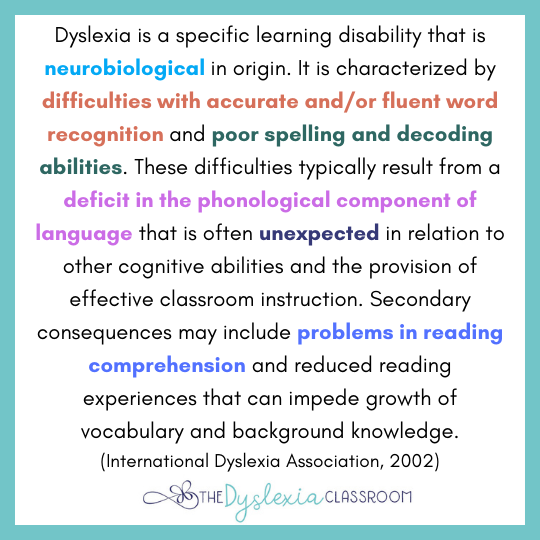
Reversals and Handwriting Development
Many children reverse letters as they begin to learn to read and write. As students learn letters and handwriting skills, we may see letter reversals until age 7 to 8. This is a normal age range for children to still have some reversals in their handwriting. Backward writing and reversals are co...
Why It's Important to Understand and Advocate Classroom Accommodations for Dyslexic Students

If you are in the world of dyslexia, then understanding and advocating for accommodations is part of the journey. Accommodations are essential for our children because they act as a bridge to access the curriculum.
Things like extra time, not marking off for spelling errors outside of a final draft, and not requiring reading aloud in front of peers are examples of some accommodations. While many people may not fully understand accommodations or how they work in the school and work setting, it is vital to address that they are tools and in no way unfair. Accommodations are not cheating or a crutch but a tool our students use to level the academic playing field and ensure equal learning access.
What Research Says About Articulatory Awareness in Reading Instruction
This week on Instagram when I shared the alphabet chart I use with my early learners, including mouth formation cues and corresponding keywords, I received a question about the research behind articulatory awareness regarding reading instruction. It is so important that our work be grounded in current research, so I appreciated this question and want to address it here.
In my work with students, we focus on the speech-to-print approach. I explicitly teach phonemes, or those individual speech sounds, to students. We begin by introducing the sound and connection to the mouth formation. Research shows that our brain makes memory traces of sounds by paying attention to our mouth formations. When we begin with this sound, we're laying the foundation for knowledge of graphemes. This articulatory awareness anchors our phoneme-grapheme correspondences.
Obviously, I am a big proponent of beginning my literacy instruction by focusing on speech production and then linking that knowledge to t...
Why Word Chaining Should Be A Part Of Every Literacy Lesson
Word chaining and the building of words should be a part of every literacy lesson for beginning readers. When students build words based on the sound symbols explicitly taught, they engage in the orthographic mapping process, which is essential for reading and writing. This linking of speech-to-print is critical for learning to read, and it's fun! Students can participate in hands-on manipulation of letters to create, read, and manipulate new words.

Why is it essential to link sound to letters?
This mapping of speech to print can immediately unlock reading for children. How wonderful is that?!
Dr. Martin Kozloff (2002) stated, "If a child memorized ten words, the child can only read ten words, but if a child learns the sounds of ten letters, the child will be able to read 350 three-sound words, 4,320 four-sound words, and 21,650 five-sound words."
There is no guessing when one can map the speech sounds to the representation within our orthographic system. Instead, students use t...
How to Make Morphology Instruction Multisensory
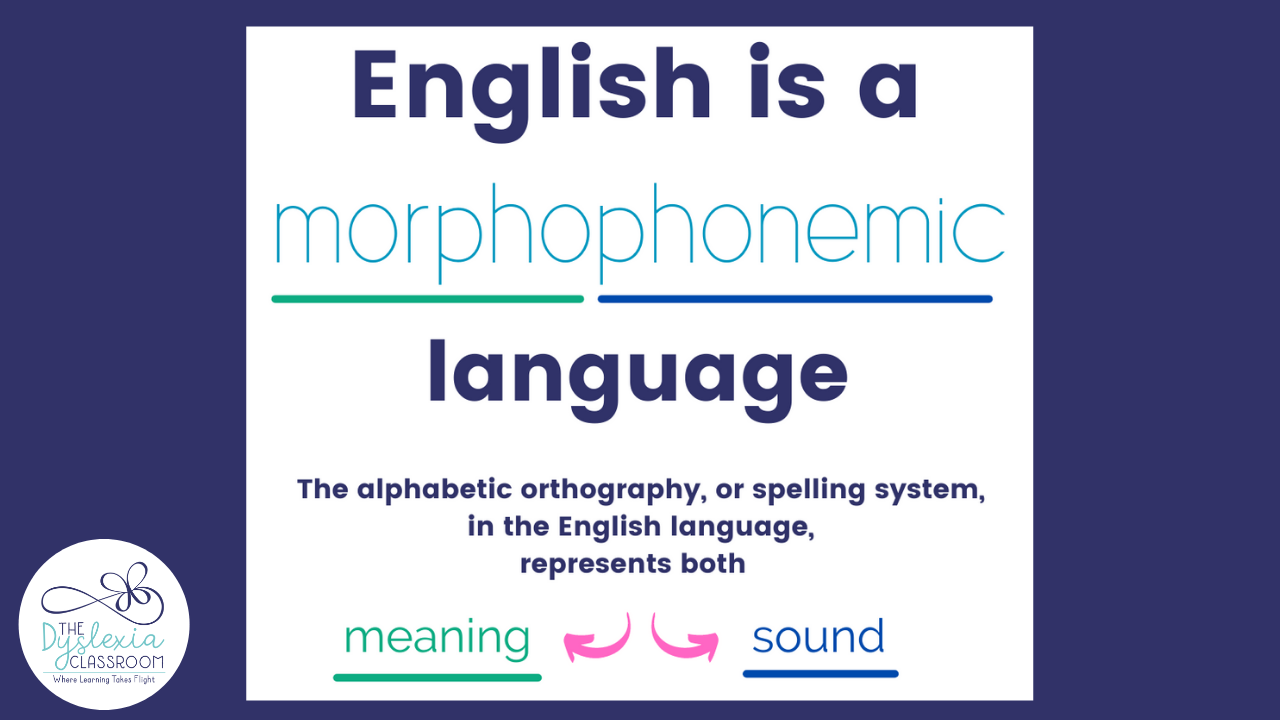
From the beginning, we want students to understand that words carry meaning, and morphology is a great way to help students deepen their understanding of language. We don't have to wait for this instruction to take place. Instead, we can embed morphology instruction into our lessons and help students with this right from the start.
What is Morphology?
Morphology instruction, the study of words and how they are formed and used, is one of the elements of structured literacy. When we look at language through the lens of units of meaning within words, that is part of morphology. Dr. Louisa Moats notes, "Knowing morphemes enhances reading, vocabulary, and spelling." (Moats, 2000).
When we work with morphemes, we work with the smallest unit of meaning that exists within our language. Morphemes can be single letters, or units of letters, that carry meaning and may or may not stand alone.
The English language is considered a deep orthography. Morphology includes prefixes, suffixes, fr...
The Multiple Learning Opportunities of a Spelling Dictation Lesson

It is said that a picture is worth a thousand words. I like to snap photos of small moments in lessons and reflect on all we've accomplished. It's like a window into learning. I believe in finding ways to have every task target and reinforce multiple aspects of learning. This little photo is a perfect example.👇
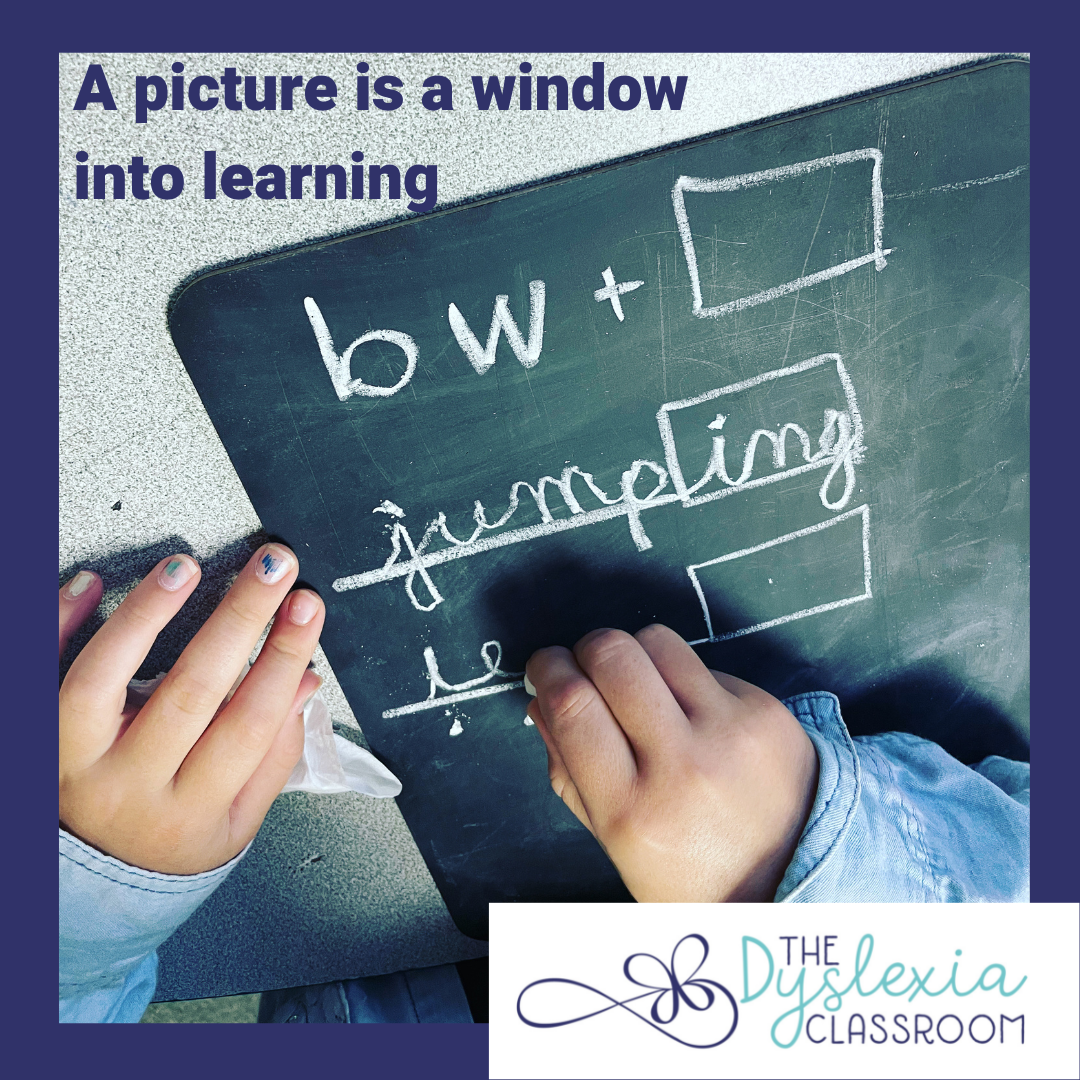
There is so much happening in this simple snapshot of a spelling dictation within a lesson! While this portion of the lesson is generally 5-7 minutes, you can see how much is covered and reinforced - a lot!
Multi-Sensory Handwriting
Our goal is to always move towards the automaticity and fluidity of writing. We can promote the practice of letter formation strokes in a multi-sensory way (chalk, sand trays, play dough, sandpaper, shaving cream, etc.). Practicing letter formations, the same way, creates the muscle memory needed to make handwriting automatic.
When students have labored handwriting, it impacts their ability to focus on the higher-level writing tasks because th...
How to Help Students with Reading Stress and Anxiety

When our children enter school, it is often filled with excitement and a desire to learn. Children, their families, and teachers begin their journey into education with the idea that reading will be unlocked as the lessons unfold. This reminds me of one of my favorite books, Thank You, Mr. Falker, by Patricia Pollacco. The book's family gathers around a little girl as she is about to embark on her year in kindergarten and shares how she will learn to chase knowledge through the pages of books.
Reading is ingrained in us at a very young age with great importance. We know this is true for many reasons, but the student struggling with acquiring this skill may begin to feel anxiety and stress surrounding their struggles to unlock the words on the pages.
These students see their peers choosing chapter books while they are still reading from an assigned book basket. They recognize that their peers complete writing assignments when they have just gotten their ideas organized. They may not...
Top Teacher Tips for Parents To Help Students Study at Home
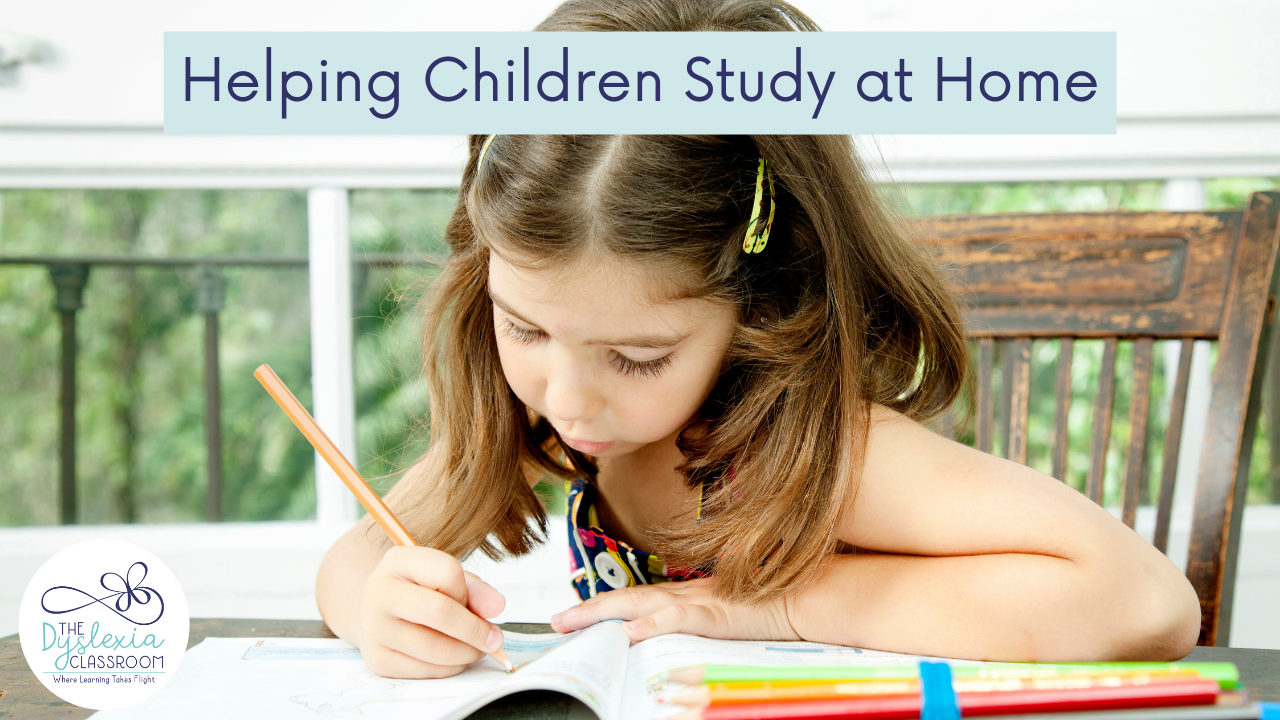
This week, I'm sharing 7 tips to help children study at home. As a teacher or practitioner, you might not find this post relevant, yet it is. Not only will these tips help parents who read this post, but as educators, we can continue to support our students by suggesting these strategies be put in place at home as we work with families in establishing good study skills that align with students' needs and that move learning forward.
Use Time Wisely
Setting aside designated time to work on assignments, papers, etc. is a good habit for all students but can be especially needed for students who require extra time to process information or complete tasks. Setting a timer and working on an assigned task within that time frame can help keep students focused on the task at hand. If the timer dings before the job is complete, take a mini-break or continue working if appropriate.
Ask for Assignments Ahead of Time
Just as our children may need extra time on assignments and tests during schoo...
How to Improve Metacognition Skills in Our Students

Have you ever run up against something that isn't working? I've seen this in my students, other adults, and even myself. It is frustrating for all of us.
When this happens, it's helpful to take a step back. In our fast-paced world, we often miss the importance of stepping back, reflecting, analyzing, and altering approaches so that we may move forward.

The other day one of my kids was trying to get into the barn to feed the horses. There is a latch and chain that secures one of the doors, and it needs to be unlatched before the door will open. I was in the garden, and I could hear loud banging as she tried to push the door open without unlocking the chain.
I could hear her frustration. As I walked over to help her, I saw that she was just repeating the same movement of pushing the gate forward when she just needed to pull the gate back to unlock it.
It made me think of our students and classrooms where we are sometimes just pushing forward, hitting a wall, and then just pushin...





